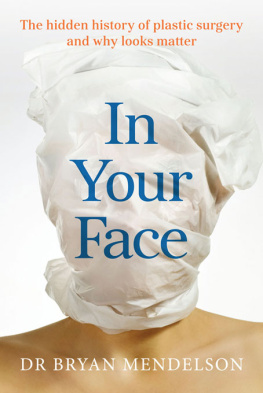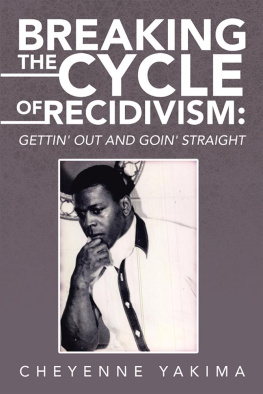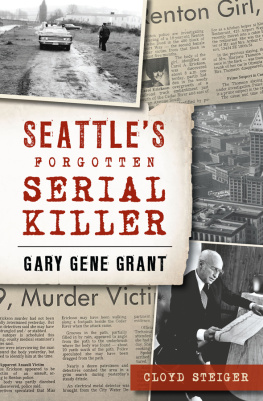T his book could not have been written without the help and support of numerous people: friends, archivists, and experts all kind enough to grant me their time and provide me with detailed information or complex carbohydrates. Thank you to my wonderful agent Eliza Rothstein for seeing the potential in the book and my publisher Jake Bonar for trusting my vision and championing my manuscript.
I extend my heartfelt thanks to Douglas Liptonwho was unfailingly patient and always willing to explain things to meand his incredible recall of events long ago, which made my work so much easier. Getting to meet and chat with Norman Cavior was another great pleasure; he welcomed me into his home and was completely transparent about his workthank you. And thanks to Richard Kurtzberg and Carol Brodsky, who were kind enough to sift through their memory banks for me and illuminate this period.
I cant say enough good things about Barbara Lewin, who was kind enough to discuss the work of her father, Dr. Michael Lewin, and dig into her childhood recollections of home life and his habits; you made the book so much richer by sharing these details. I want to share so much appreciation for the input of Dr. Richard Bloomenstein and Dr. Morton Goldstein, who willingly shared their tales of their plastic surgery residencies at Montefiore Medical Center and their experiences of visiting Rikers Island and Sing Sing Correctional Facility.
Again, more thanks to the many plastic surgeons with whom I consulted for this work whose many insights (if not their own stories) helped shape the book: the now deceased Dr. Melvin Spira, Dr. Harry Glassman of Los Angeles, Dr. Leo Munick, Dr. Steven Blackwell, Dr. Daniel B. Tuerk, Dr. Elliot Jacobs, Dr. Jack Fisher, and Dr. Sam Most.
Thanks to journalist Steven Long for digging through the case files of his mind and to Lindsey Linder for patiently explaining the ins and outs of the criminal justice system. Much appreciation to Wallace Mandell, our discussion really opened my eyes, and much thanks to Steven C. Hayes, Bonnie Berry, Robert Agnew, Daniel Hamermesh, and Autumn Whitefield-Madrano for their generosity with their time and their patience in explaining psychological concepts and historic precedents to me.
Thank you to Chris Eskridge for connecting me to the wonderful Ed Latessa, and Latessa for being a font of knowledge and insight, and criminologist Kevin Thompson, whose data was heaven-sent.
Thank you for the kindness of the many inmates and former offenders interviewed; your willingness to discuss difficult events and experiences was gratefully received; thank you in particular to Sherry Willeford, Joyce Pequeno, Claudia S., and Melissa Hutchison.
My San Francisco #writerpod provided invaluable support and occasional outdoor picnics during the process; the amazing Daniela Blei, Ellen Airhart, and Larissa Zimberoff rock, and my book is so much better for your thoughtful reads. Also, Nathan Hurst, you rockI so appreciate you for taking the time to give me feedback and line edits; your editorial eye was really helpful. Thank you to Zach St. George for believing in my vision and for poor quality vodka. Brad Balukjian and Carla Walter, thank you for being some of the earliest readers of this work and for your encouragement when the work felt like an unwieldy mess. Extra props to the wonderful folks at the San Francisco Writers Grotto for letting me take a backseat as board member during the intensive writing part and for championing my work; in particular, members of the pub committee: Kevin Smokler, Kathy Seligman, Jenny Bitner, Connie Hale, and many, many more. Your cheer, encouragement, and generosity with your time and experience was deeply appreciated.
Writing is a frustrating, lonely process, and I am grateful for the support and encouragement of my friends and family, whose memes, calls, Zooms, and Amazon deliveries from both sides of the pond kept me going: Nicole Reamey, Arlo Reamey-Brindle, Juliette Jardim (see, I do know how to spell your name), Lillian Rafii, Kulsum Vakharia, Sonia Paul, Katia Savchuk, Becky Dixon, Bryony Hewer, Debra Peters, Sebastian Bird, Dr. Harman Boparai, Alex Roumbas-Goldstein, Ali-Heriyanto Lambo, Alissa Figueora, Gemma Cartwright, the wonderful Thad Eirich, Lisa Shaverin, Adina Ben-Ari, Simon Rabinowicz, Jack Rabinowicz, Danielle Rabinowicz, Margie Woodring, Tim Woodring, Jodi Eirich, Toby Eirich, Laura Ellison, Meg Waltner, and Carly Holmes.
Thank you to the crew at #2040Sutter, your companionship and friendship has been an unexpected joy amid all of this: Roberta Rosen, Alex St. John, Miki St. John, and the indomitable Kaley St. John.
Thank you to the Rockefeller Archive Center, which awarded me a grant to travel to and conduct research at its archives and to Joan Berry and Collin Anthony from the Stanford McCoy School of Ethics, who saw the potential in my proposal and invited me to share it with a cohort of undergraduates via a Zoom lecture.
So many librarians and archivists went out of their way to help me collect the information needed, even amid the coronavirus pandemic. This work could not have been completed without their kindness and patience: Elisa Ho, researcher extraordinaire at the American Jewish Archives, supported this project and patiently answered all my questions, even when they were repeats due to my Gmail chains; Adam Leverone at Getty Images for his helpfulness in providing access to a much-needed file; Traca Wolfe from the Max Chambers Library at the University of Central Oklahoma, who went above and beyond to provide me vital documents; Gayle Martinson of the Library, Archives, and Museum Collections of Wisconsin Historical Society; Melissa Dorsten of Ohio Library Services; Sandra E. Yates from the McGovern Historical Center, who patiently and quickly processed several requests for scans; Thomas C. McCarthy of the New York Correction History Society Archives for his willingness to discuss all things Anna Kross; thank you to James Vann, formerly of the New York Department of Correction for humoring my questions; Jessica Murphy at the Center for the History of Medicine, Harvard Medical School, was a font of knowledge and access; Ken Cobb from the New York Municipal Archives; and the California Historical Society.
To Laurie Thompson and Carol Acquaviva from the Anne T. Kent room at the Marin County Free Library, I so appreciate your patience and turnaround when I was throwing unreasonable deadlines at you; Don Chaddock of the California Department of Corrections and Rehabilitation; Connie Delhanty and Sheila Smalling from Montefiore Medical Center archives; Aryn Glazier from the Dolph Briscoe Center for American History, Austin, Texas; Ellen Belcher, special collections librarian at John Jay; Drew Bourn, the historical curator at the Lane Medical Library at Stanford Medical History. Thank you to Shawn Dellis and Mark Torees of the Pacifica Radio Archives for their speedy responses, Jeff Thompson, librarian and archivist from the Church History Library in Utah, the awesome Erin McGarvey for her copyediting chops, the wonderful people at the Rowman & Littlefield Publishing group, and many, many more.
We know what works. We know that supporting ex-offenders and their families keeps our men out of prison. That makes a difference in our families and can stop the cycle of poverty.President Barack Obama, 2007
I am not real, I am theater.Lady Gaga, 2011
A New Look for New Life of Former Inmate St. Louis Dispatch, 2012
N ancy Willefords new look didnt provide the Cinderella ending shed hoped for. Two years after she was paroled, she was charged with check forgery and possession of a firearm and returned to jail. Inside, her heroin addiction escalated, and when she was released, she turned tricks to pay for hits. She mostly ignored her children, but when she felt gregarious, shed let her daughter, Sherry, comb the tangles out of her long red-gold hair.












